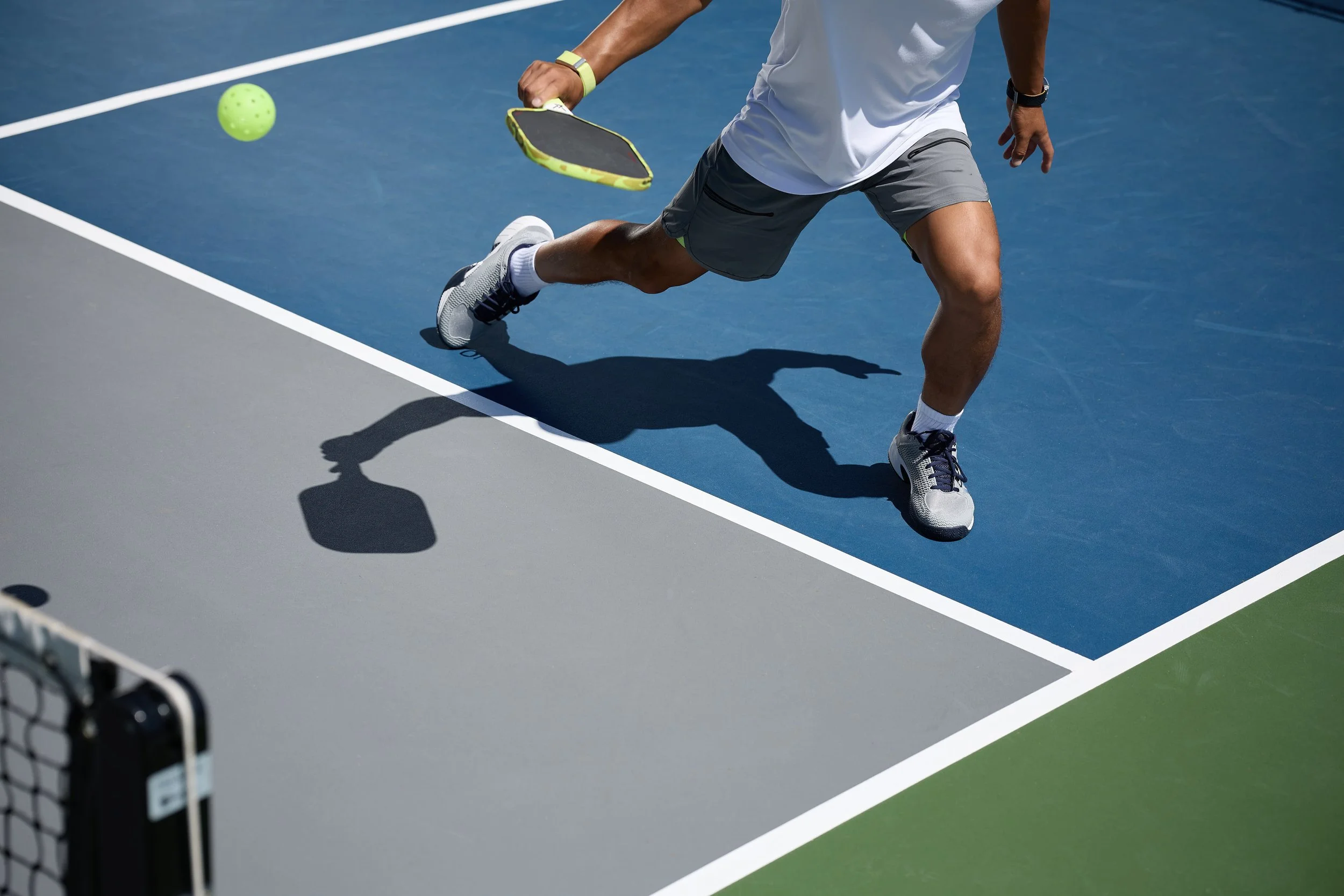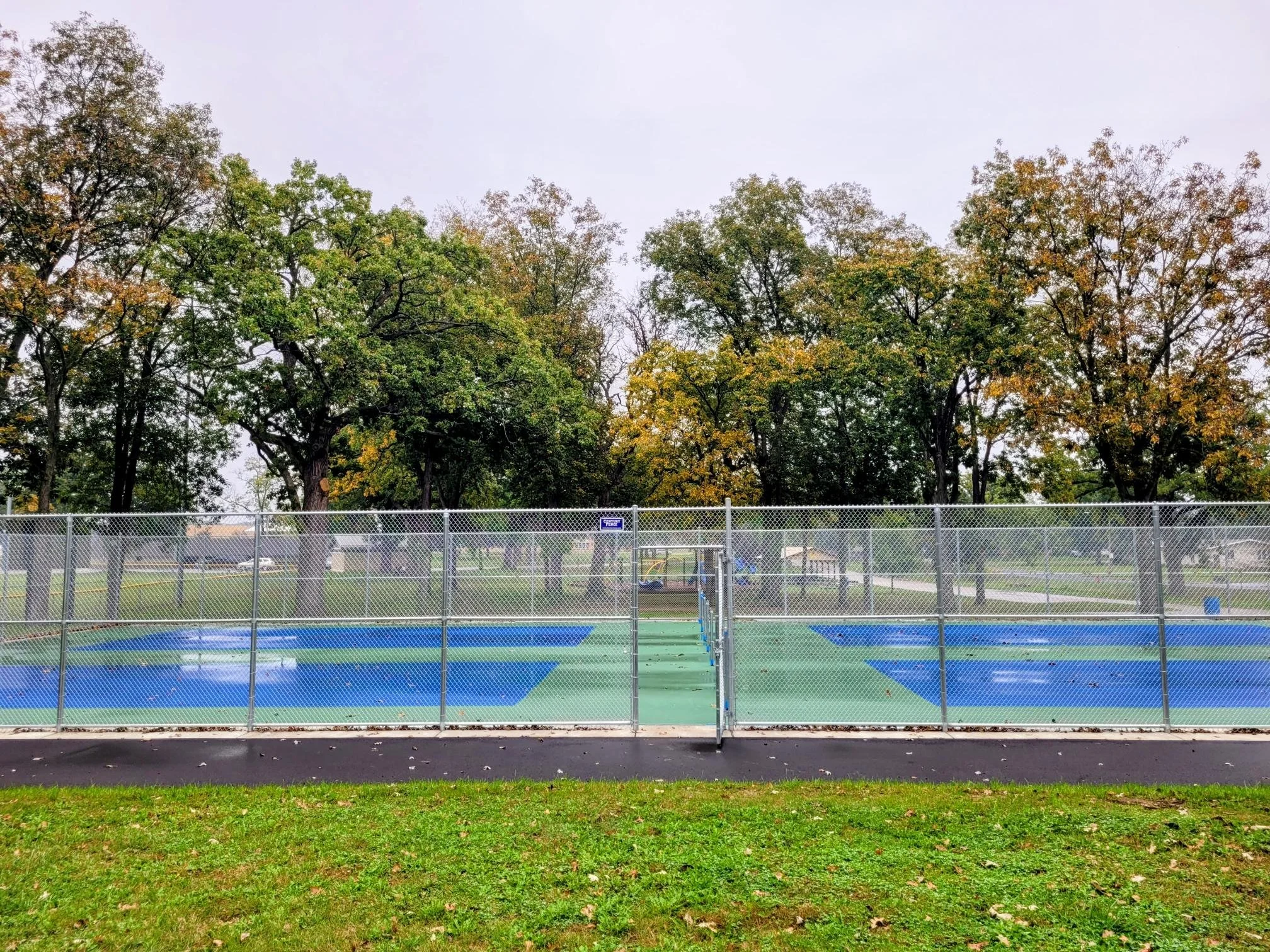Pickleball is sweeping the nation, and communities everywhere are racing to keep up. Why? Because this fast-growing sport does more than entertain—it builds connections, encourages wellness, and even drives local tourism. We’ve seen the impact firsthand through recent projects that transformed public spaces into vibrant recreation hubs. Here’s a look at two recent success stories, followed by seven key considerations for planning your own courts.
Field Park Courts | Village of Mukwonago, WI
RM recently designed four new pickleball courts at Field Park, complete with color-coated asphalt surfacing, chain-link fencing, and future-ready conduit for lighting. Construction is nearing completion, and the courts will soon open as a vibrant recreation space for the community.
Field Park courts are open! The Village celebrated with a ribbon cutting on Wednesday, October 22nd.
Hall Park Courts | City of Riverside, IA
Axiom Consultants, an R/M company, led the design and construction of new pickleball courts at Hall Park, transforming underused space into a modern recreation destination. The project includes multiple courts with durable surfacing, perimeter fencing, and lighting-ready infrastructure to support extended play and future community events.
Hall Park courts are in the final stages of construction and plan to open to the public soon.
Understanding the Popularity & Community Impact
Pickleball continues to grow across all age groups, making it a smart investment for municipalities. Courts promote active lifestyles, strengthen neighborhood connections, and create inclusive spaces for residents. They also support local economies by attracting tournaments, events, and visitors. This turns parks into destinations and helps communities thrive.
Official Court Dimensions, Per USA Pickleball
SPACE & DESIGN REQUIREMENTS
A standard pickleball court measures 20’ x 44’, but you’ll need at least 30’ x 60’ per court for safe play and circulation. Planning for multiple courts is a smart move if you want to host tournaments or accommodate future growth. Amenities like benches, shade structures, and water fountains enhance the player experience and encourage longer visits.
For example, Field Park in Mukwonago features a fully fenced area of about 16,200 sq. ft., housing four courts with internal divider fencing and walkways. Meanwhile, Hall Park in Riverside includes three courts within a 7,680 sq. ft. fenced area, complete with fencing for safe play.
ENGINEERING & CONSTRUCTION DETAILS
This is where the success of your project really starts. Engineering considerations include:
Base Material: Concrete and asphalt are common, but post-tension concrete is often preferred because it minimizes cracking and extends the life of the court.
Surface Coating: 100% acrylic coatings provide a smooth, durable finish that resists weather and wear.
Drainage and Grading: Proper grading ensures water flows away from the court, preventing pooling and surface damage. Subsurface drainage systems may be needed in areas with poor soil conditions.
Fencing and Layout: Fencing should have openings no larger than two inches for safety. Court orientation matters too—north-south alignment reduces glare for players.
Structural Longevity: Engineering teams often incorporate expansion joints and reinforcement to handle freeze-thaw cycles, especially in Midwest climates.
NOISE & ZONING
Pickleball’s signature “pop-pop-pop” sound can spark complaints if courts are too close to homes. Address this early with acoustic planning, setback requirements, and clear permitting processes. A little foresight goes a long way toward keeping everyone happy.
LIGHTING & ACCESSIBILITY
LED lighting extends play hours and makes courts safer. ADA-compliant features—ramps, accessible restrooms, and seating—ensure inclusivity. Adaptive pickleball programs are gaining traction nationwide, so designing with accessibility in mind is a win for your community.
FUNDING OPTIONS
Municipalities can tap into federal and state grants like the Land and Water Conservation Fund, plus private foundations and corporate sponsorships. USA Pickleball offers “Play It Forward” grants for court conversions. Community fundraising and naming rights can also help offset costs.
LONG-TERM MAINTENANCE
Plan for resurfacing every 5–8 years, regular cleaning, and equipment checks. Investing in quality materials upfront reduces long-term costs and keeps your courts looking great for years to come.
Pickleball courts aren’t just an investment in recreation—they’re an investment in community. At Ruekert & Mielke, we help municipalities bring these projects to life with a blend of smart engineering, thoughtful design, and long-term planning. From site evaluation and stormwater management to layout, grading, and ADA compliance, our team ensures every detail is built for durability and community enjoyment.
Ready to serve up something great? Let’s talk about how we can make your pickleball vision a reality.




